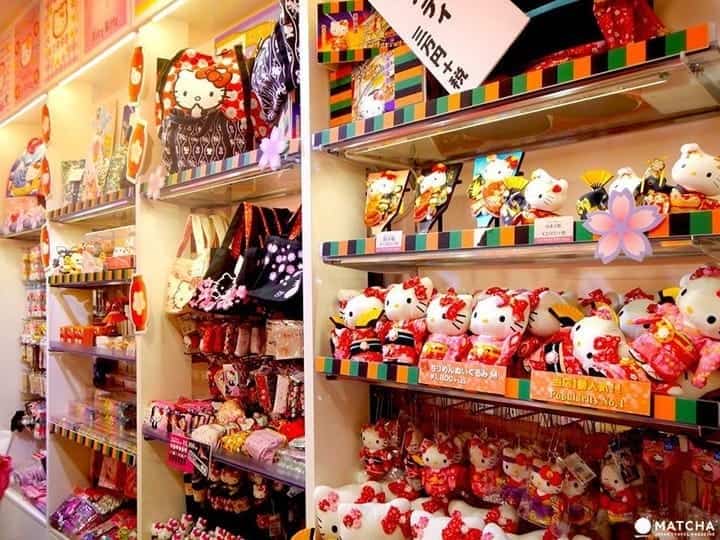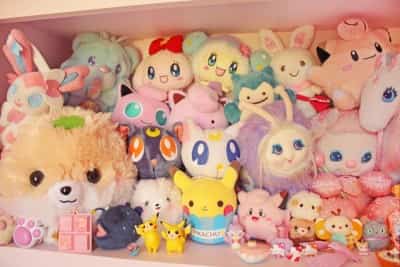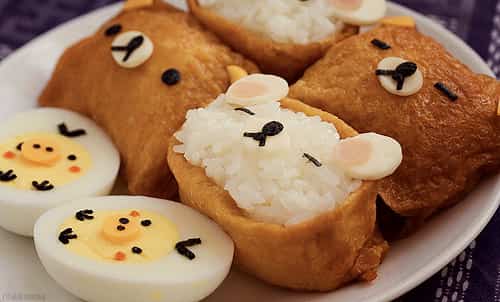Today, the love of cuteness has achieved a stronghold in the culture of Japan. It is evident in their food, apparel, modes of entertainment, appearances and behaviors. Many even regard kawaii as an ineradicable part of the Japanese identity. It would not be wrong to say that kawaii deeply pervades in their culture and lifestyle.
Author
But what exactly is kawaii and why have the Japanese embraced it in all spheres of their lives? And why, over the past few years, thousands of others across the globe have come under its influence?

What Is Kawaii?
The term in which the origins of kawaii lie is ‘kaohayushi’ (かほはゆし). Usually written in Hiragana, it holds the meaning of a bright red face due to shyness or embarrassment. First used during the Japanese Heian Period, this term later mutated to ‘kawayushi’ (かわゆし), which has a wide range of meanings, from something cute and adorable to anything small and vulnerable. Eventually, due to overuse, the term got simplified into kawaii.
Today, kawaii refers to anything cute, charming, or loveable. It could be used for a person, an inanimate object, an expression, an action, or even a situation. Thus, kawaii culture is all about recognizing the positivity and joy in the simple things of life.
Background of Kawaii
Many researchers believe the dawn of kawaii culture occurred during the late 60s and early 70s when teens developed their special version of Japanese handwriting. The new writing style consisted of rounded characters embellished with tiny doodles of stars, hearts, and other symbols.
It became such a hit across Japanese schools that students were soon forbidden to use it. The older generation supported this ban by claiming the new writing style, also known as marui-ji, made comprehension difficult. However, many historians agree that it was seen by everyone as a rebellious move taken by the young generation, which went against the strict traditions and harsh rules of Japan. Kaomoji and emoji, which are famous on the internet these days, are said to be inspired by this writing style.

Inspired by this act, the Japanese business and corporate class came up with a way to utilize this newfound love of cuteness. Many companies used kawaii as a marketing strategy, to enhance their business appeal, especially targeting the Japanese youth.
After the dramatic success of Sanrio’s Hello Kitty that was released in 1974, many other companies followed in their footsteps, and eventually kawaii became a part of the business world. They started manufacturing merchandise with kawaii aesthetic. Famous anime and manga characters were also introduced with the element of cuteness such as Pokémon and Doraemon.
Later, even airlines and banks followed suit, making kawaii characters as their official mascots. Eventually, Japanese markets got filled with kawaii items, including clothes, accessories, crockery, and much more, which were welcomed by people of all ages and genders.
Why Did People Fall for Kawaii?
Many believe that the spread of the Japanese cult of cuteness has always been self-aware. It is also considered as a political move taken by the Japanese government, which turned out to be remarkably successful. But what are the true secrets behind the worldwide fame that kawaii has gained?
The Japanese cult of cute uses a very specific yet powerful human instinct. Whenever we see an object with the characteristics of adorability or innocence, as an emotional consequence, our mind instinctively develops feelings of love and warmth. Such feelings are usually associated with babies or young animals, thanks to their wide eyes and tiny builds.
These emotions were conveniently used (one may even say exploited) by the government and the business class of Japan to increase the global appeal of their local products and services. Even Sanrio’s founder, Shintaro Tsuji, conveyed (although subtly) that their Hello Kitty was meant to overtake the popularity of Disney’s Mickey Mouse.

Kawaii Increasing Economic and Cultural Profits
Exporting kawaii culture across borders brought economic and cultural dominance to Japan and opened globalization opportunities for the nation. The government made kawaii a part of their bigger plan to achieve a higher status overseas.
Indeed, influencing the global youth with the blend of coolness and cuteness associated with kawaii brought more power to the Japanese. This way, Japan rebranded its usual image of a serious, composed culture developed due to its militarist past into a livelier and more modernized one.
As far as the business and corporate class was concerned, they happily obliged to play their role since it ensured more money along with the expansion of trade. As a result, the production of cute items began across markets. After entering Japanese households, these items quickly made their way to other East Asian countries like Taiwan, China, and South Korea and later reached the Western markets.
It won’t be wrong to say kawaii is a Japanese attempt to promote commercialism and capitalism under the disguise of cuteness. But why there is such a huge demand for this cult of cuteness? Why are the people of Japan and other nations playing the role of consumers in this market of cuteness, which is merely a capitalist one? Let’s look into the reasons for this as well.
Kawaii as a Buffer to Hide True Feelings
East Asians including Japanese, Chinese, and Koreans are not very adept at expressing their real feelings in public. This is because they are scared of being shamed or judged by others for going against their strict norms and traditions. This is why the cuteness factor or kawaii is utilized as a buffer to conceal one’s true feelings and intentions.

Kawaii as Escapism
Adults in Japan have a huge pressure of competitiveness and responsibility upon them, so it comes as no surprise that people want to feel the happiness and freedom that comes with childhood. Wearing kawaii clothes and using cute items is a means of escape from their reality. It’s more like a way to resist and cope with the burdens that come with adulthood. By engaging with kawaii for at least a while, if not forever, they can feel the bounties that come with not growing up.
Kawaii as a Source of Tranquility
In Japan, it is a fact that adults are expected to work tirelessly throughout their lives. Strict rules and regulations have to be respected and followed everywhere, including schools, colleges, and workplaces. Since cuteness brings forth the emotions of positivity and amusement, the Japanese have welcomed kawaii in their lives with open arms. This could be taken as their way to relax and calm down after a busy, tiring day at school or work.
Where Can You Find Kawaii Today?
Kawaii in Fashion
The most famous trend in kawaii clothing is Lolita fashion. Followed by Japanese girls and women, it includes the use of clothing that accentuates their adorableness. To achieve a porcelain doll-like look, articles like laces, aprons, petticoats adorned with ruffles, and even parasols are commonly used. Although it is based on the classic Victorian and Edwardian fashion, girls sometimes give a gothic touch to their clothing. Women also wear wigs or dye their hair in bright colors.
Kawaii fashion is not limited to women only. Japanese men embrace kawaii fashion by sporting adorable clothing while smashing gender-specific rules and feeling cozy. They also shave frequently to achieve a youthful look.

Kawaii in Appearance and Behavior
Some Japanese women exhibit kawaii-inspired mannerisms in their daily lives. They take up a high-pitched voice and giggle while hiding their mouths instead of laughing freely to display their cuteness or shyness. They are even proficient at using makeup to create innocent and baby-like looks.
Kawaii in Food
Kawaii characters are usually printed on the typical bento lunch boxes in Japan. The Japanese have taken their love of cuteness to another level by integrating it into the food as well. Boiled eggs and rice are not plated in the conventional, boring way anymore. Instead, they are shaped into kawaii characters, with chunks of food to make their eyes, nose, and other facial features. Adopted by many cafes, this style has also become a part of several households.

Kawaii Mascots
Another form of Japanese marketing which includes kawaii is Japanese mascots, also known as yuru-chara. They are particularly designed for the advertisement and promotion of an event, festival, or organization. Sometimes, these mascots are used to make tourists aware of famous local products and sightseeing places.
Kumamon is one popular example of such a mascot. With its blushed cheeks and innocent vibe, this yuru-chara represents the Kumamoto prefecture of Japan and it actively promotes their local goods and services.
Kawaii in Entertainment
Anime and manga characters are one of the most common ways through which many people come across the kawaii culture of Japan. The Pokémon franchise is one such example. From video games and comics to movies and TV series, this franchise has played its role in acquainting people with kawaii culture.
This is because the Pokémon, which inhabit various locations like seas, forests, mountains, and caverns, are designed with the factor of adorability in them. Pikachu, Bulbasaur, Togepi, and Jigglypuff are common examples of cute Pokémon.
The robotic cat Doraemon is also another prominent example of kawaii in entertainment. With a blue body and a golden bell dangling on its neck as its trademark features, Doraemon comes from the future for the aid of the unfortunate schoolboy Nobita. This media franchise has not only garnered popularity in Japan, but it is also loved by many across the world.

Conclusion
Kawaii or the cult of cute has had a long history, yet it is still alive in the 21st century not only in Japan but across the globe. It has now become a well-established and successful factor of Japanese culture and is displaying no marks of abating anytime soon.

